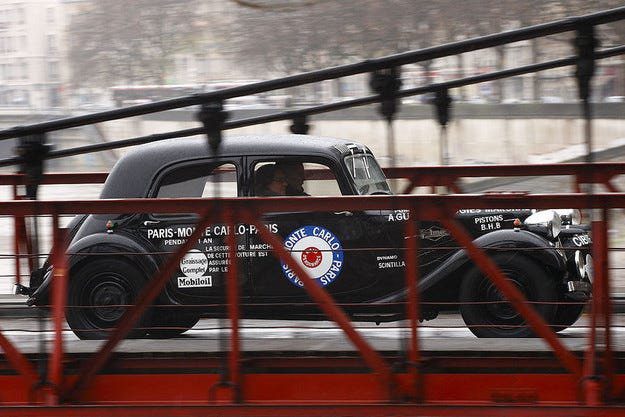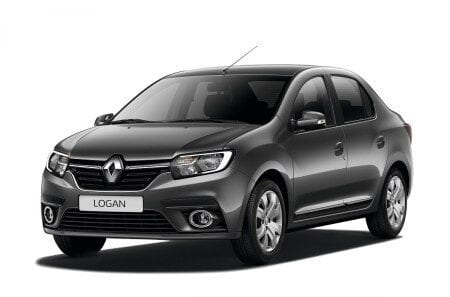
Test drive Citroën C3 BlueHDI 100 and Skoda Fabia 1.4 TDI: small world
Content

Two small diesel models compete in a comparative test
Until recently, the pleasure of small French cars was often forced to give way to the serious qualities of competitors. However, the new Citroën C3 has every chance of winning. Skoda Fabia.
As if a box with the words “Prejudice” is being closed from a large chest of drawers. Yes, it would be more correct to say “expectations met”, but in the end, the fulfillment of expectations actually involves some prejudices. That's all. Now, on the sharp K 2321 road, somewhere in the middle of nowhere, the new Citroën C3 starts fresh - because it stubbornly refuses to live up to the cliché that French cars are afraid of corners. Instead, a small model that weighs less than 1,2 tons handles all the twists and turns of a secondary road with great euphoria.
The C3 has only slightly understeer with its 16-inch wheels (standard on the Shine level) moderately tilted to the side. Hey, how did you do that? But to keep the driving pleasure from overwhelming and spilling over the side curtain airbags outside and the patched asphalt, the comfortably padded and wide seats refuse to provide lateral support.
French suspension comfort
The Skoda Fabia seats push you a lot harder and offer great support for the driver and passenger next to him. Some questions are caused only by built-in headrests. No, just one question: why? It doesn't matter, because the Fabia is still ahead of the C3. Tighter chassis settings, a more precise steering system and a more carefully tuned traction control system allow the Czech car to work even harder around corners. They will say: no one cares about a small car. And to some extent they will be right. But why not? Moreover, C3 has other things to offer. So, let's open another box of prejudice.
“French cars offer better suspension comfort than any other,” reads the inscription on the folder in the drawer. That's not always true - as we've known since the advent of the DS5. However, C3 proves that clichés can be true. Although the French model uses conventional components in the chassis recipe (MacPherson struts at the front, torsion bar at the rear), it responds with a feel for any bumps, handles long waves on pavement quite confidently and handles short ones quite well. Only the passage of gross defects on the road surface is accompanied by some knocking. On the contrary, the small Skoda has already lost its cool under such conditions and rather rudely conveys a lot of bumps to passengers, and the body allows itself too pronounced vertical movements. In this regard, nothing changes when driving with a full load (443 kg). It's the same with the C3 - it continues to ride pleasantly comfortably. He is allowed to load up to 481 kilograms.
Smart add-ons in Fabia
However, that doesn't make the C3 much easier for you - luggage has to be lifted and carried over the 755mm high rear sill (Skoda: 620mm). Both machines make it difficult to use the maximum cargo volume with the large step that remains after folding the rear backrests. However, the Fabia manages to alleviate everyday stress with a few nice touches, such as a sturdy basket for bags and envelopes or a two-position lockable boot lid – and with its large glazed surfaces and narrower rear speakers, it offers more good visibility in all directions. .
In addition, the Fabia is less restrictive for rear seat passengers, which provides significantly more headroom than the lower headroom C3. The comfort of the rear seats is decent as in a small car, the backrest tilt and seat length are well matched.
Unsuitable engines
However, the diesel engines of both models for the test were not chosen so well. Paid only for mileage of 40 kilometers per year. Then why do we experience them? Because Citroën currently only offers the C000 for testing in the BlueHDi 3 version - and they know very well why they do it.
Thanks to its powerful intermediate thrust, the four-cylinder engine easily opens the drawer, hiding the prejudice that the best diesels always come from France. Yes, and this is not always the case, but the 1,6-liter unit easily pushes Skoda's 1,4-liter engine against the wall, providing a very high level of driving comfort. Although both engines reach their maximum torque at 1750 rpm, they have 99 hp. The C3 accelerates with much less vibration, picks up speed without vibration, and distributes its power over a much wider speed range.
While the C3's ambitions start to dwindle at just over 4000 rpm, Skoda's three-cylinder TDI is already resigned to just over 3000 rpm – the result of a longer piston stroke and lower compression ratio than the C3. . As a result, despite 90 horsepower and 230 Newton meters when measuring acceleration, Citroën's taillights quickly get lost somewhere ahead. The Frenchman accelerates to 100 km / h in 10,8 seconds, while the Skoda takes 12,1 seconds.
C3 more economical
The C80's 120 to 3 km/h intermediate time is 8,6 seconds and the Fabia's 11 seconds—enough time to be pissed that you didn't buy the 1.2 TSI. He will not pierce his ears with an annoying ringing diesel intonation. How about thinking about something else? It won't be easy. Even if you succeed, you will probably wonder about the meaning of the abbreviation. Even on paper, the cost of Skoda and Citroën is almost identical with a difference of one deciliter (3,6 vs. 3,7 l / 100 km). This difference persists in practice, but with the opposite sign - because the C3 is happy with 5,2, this is a Fabia 5,3 l / 100 km. However, it is too small to be a winner in the environmental and fuel cost section. Also of interest is the fact that even on the low consumption eco route, the four-cylinder unit retains its lead with 4,2L/4,4km.
So, everything speaks in favor of driving in French? As for the motorcycle - yes! However, Citroën's five-speed gearbox appears to have been bought by a supplier who specializes in clay production. In any case, the switch is usually lacking in precision, with which C3 confirms the negative cliché. At least the gear ratio is in order - the HDi engine never lets you gasp helplessly or develop excessively high speeds. Sixth gear can be ordered, but not particularly necessary.
The same is true with the Fabia transmission, which has a much more precise shift lever on the track. And if we talk about accuracy, let's say, in the salon, the Fabia is striking in its more conscientious performance. While Citroën's textile upholstery forms small folds in the corners, Skoda's fabric is well stretched. In addition, with chrome frames in some places on the dashboard and slightly better quality plastic, the Czech kid shows that the owners of small models have the right to be serious and it is not necessary to always refer to the beauty of their car, so as not to hurt it about its shortcomings.
Complex control of functions
Plus, as nice as the idea of combining all the functions on one touchscreen, it doesn't make the C3's controls and controls truly intuitive. And who cares to find where to adjust mirrors or seat heating? In Fabia, nobody is forced to search; The infotainment features come with direct selection buttons for some of the main menus, only the screen is mounted higher than it should be.
Basic information - such as speed and revs - is used seamlessly in both models, for which we should be grateful, because the driving pleasure that two children bring is really great. So, back to K 2321 - we just had to open and close doors and hoods, load luggage, count expenses and count auxiliary systems (for observation and lane change on C3, forward collision warning and emergency stop assistant on Fabius) .
Both Citroën and Skoda show that customers in this segment can make serious claims today. The new C3 impresses with its balanced chassis, opening and closing the drawers in a biased way, without getting into any of them. In this regard, Fabia is more predictable, because even with two-tone - ear! “The body paint cannot hide the seriousness with which cars from the VW universe are developed. With more interior space, easier function controls, more precise and safe driving behavior and a lower price, Skoda can maintain its lead over Citroën. But Fabia has seldom found it so difficult to open the box of the "eternal winner" prejudice.
Text: Jens Drale
Photo: Hans-Dieter Zeifert
Evaluation
1. Skoda Fabia 1.4 TDI – 407 points
Fabia won the comparison tests by a larger margin. This time, it was helped by more space, higher functionality and more precise gear shifting.
2. Citroën C3 BlueHDi 100 – 400 points
The old C3 lost out in comparison tests by a wide margin. Its successor was praised for its high suspension comfort, agile handling and a powerful and fuel efficient engine.
technical details
| 1.Skoda Fabia 1.4 TDI | 2. Citroen C3 BlueHDi 100 | |
|---|---|---|
| Working volume | 1422 cc | 1560 cc |
| Power | 90 k.s. (66 kW) at 3000 rpm | 99 k.s. (73 kW) at 3750 rpm |
| Maximum torque | 230 Nm at 1750 rpm | 254 Nm at 1750 rpm |
| Acceleration 0-100 km / h | 12,1 with | 10,8 with |
| Braking distances at a speed of 100 km / h | 37,2 m | 35,8 m |
| full speed | 182 km / h | 185 km / h |
| Average consumption fuel in the test | 5,3 l / 100 km | 5,2 l / 100 km |
| Base Price | 19 560 EUR (in Germany) | 20 190 EUR (in Germany) |
Home " Articles " Blanks » Citroën C3 BlueHDI 100 and Skoda Fabia 1.4 TDI: a small world
